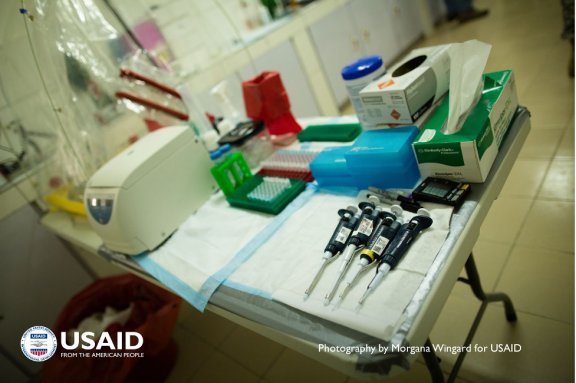
Five partners have been awarded grants to carry out a hemoglobin measurement study: the American University of Beirut (Lebanon), eHealth Africa (Nigeria), Instituto Nutricional de Centroamérica y Panamá (Guatemala), the National Institute for Medical Research (Tanzania), and the University of British Columbia in collaboration with the Helen Keller Institute and the Northern Ireland Public Health Laboratory (conducting research in Cambodia).
Anemia is diagnosed by measuring hemoglobin (Hb) concentration in blood. Anemia prevalence is defined as the percent of people whose Hb concentration falls below a predetermined reference value. In a laboratory, automated hematology analyzers are used to measure Hb concentration in venous blood. Portable devices like the HemoCue® are commonly used to measure Hb as part of household surveys; these generally use capillary blood collected by finger pricking. The advantages of the HemoCue® are its portability and ease of use in these conditions, where it can run on battery power when electric supply is hard to come by.
Many studies have reported varying Hb concentration measurement due to the mode of blood collection (venous or capillary), setting (laboratory or field), models of portable devices, environmental factors (humidity), and operational factors (sample loading time), among others. In 2019, USAID Advancing Nutrition convened the HEmoglobin MEasurement (HEME) working group, a multi-institutional research collaborative initiative that brought together researchers and experienced practitioners working on Hb measurement from different countries. Led by the HEME working group, we developed a laboratory validation protocol to identify the best procedures and methods for measuring Hb concentration. The study protocol details how to systematically compare Hb concentration using different types of blood samples from the same individuals and commonly used methods (auto-analyzer or the various HemoCue® devices). Implementation of the protocol will allow us to understand which combination of blood sampling and HemoCue® device produces the most accurate measurements.